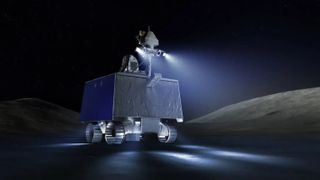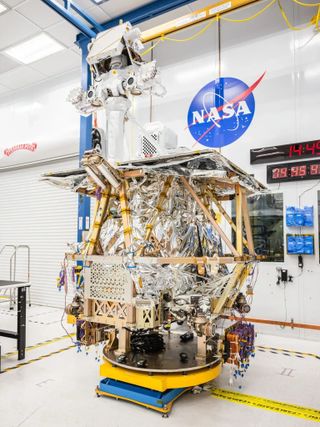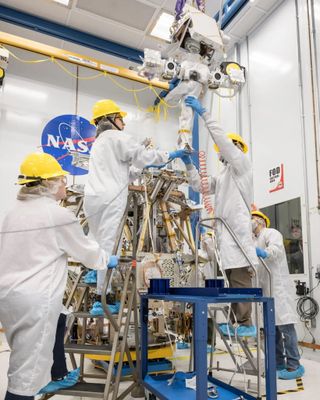NASA's Viper moon rover gets its 'neck' and 'head' installed for mission later this year
NASA's lunar rover is turning heads before a 100-day mission slated for later this year

NASA''s Volatiles Investigating Polar Exploration Rover (VIPER) has earned its "neck" and "head," aka its "mast," meaning it now stands proudly at 8 feet (2.4 meters) tall.
The photo below, taken in a clean room at NASA's Johnson Space Center earlier this month, shows progress on quite the impressive robot. It is expected to take a trip to the South Pole of the moon later this year, embarking on a 100-day mission. The mission will involve learning more about water on the moon and gleaning what other resources may be available in the region. VIPER may also help scientists understand what conditions astronauts should expect during NASA's future Artemis missions. These missions are part of a program that aims to bring boots back to the moon as well as send the first woman and first person of color to the lunar surface.

The rover’s design will aid the team of scientists controlling it as they face the challenges of the lunar surface. For instance, VIPER will need to navigate around big rocks, dip in and out of craters and meander through dead zones where communication could temporarily cease for extended periods of time. On board VIPER will be dual stereo navigation cameras, low- and high-gain antennas to connect with Deep Space Network (DSN) antennas on Earth, and a set of headlights — the first to ever sit on a planetary rover.
Related: NASA's ice-hunting VIPER moon rover getting ready to slither to the launch pad
Here's what each aspect will do.
With its stereo navigation cameras, the rover will be able to "see" with a pan range of up to 400 degrees, referring to how far it can rotate, and tilt vertically in both directions at a maximum angle of 75 degrees. This will allow the cameras to sweep the surface and detect rocks and craters of all sizes from as far as 50 feet (18.3 meters) away! And remember, as it measures to the height of a standard home ceiling at 8 feet (2.4 meters), this machine will have quite the view.

VIPER will be riding in style with headlights that can illuminate its path and, like a radar detector, provide a heads up to objects out ahead that could pose challenges or need to be navigated around. The high-gain antenna will be the major player in VIPER's toolkit, transmitting data from the 240,000 miles (384,000 km) between the moon and Earth so it can communicate with its team and stay on track with mission goals. The DSN will serve as an in-between for the data and radio waves connecting the rover with the Multi-Mission Operations and Control Center at NASA’s Ames Research Center in California's Silicon Valley.
Get the Space.com Newsletter
Breaking space news, the latest updates on rocket launches, skywatching events and more!
Later this year, VIPER will take its flight to the moon on Astrobotic's Griffin lunar lander, perched atop a SpaceX Falcon Heavy rocket; if all goes to plan, it should reach its destination at Mons Mouton near the moon's South Pole by the end of the year.
Join our Space Forums to keep talking space on the latest missions, night sky and more! And if you have a news tip, correction or comment, let us know at: community@space.com.

Meredith is a regional Murrow award-winning Certified Broadcast Meteorologist and science/space correspondent. She most recently was a Freelance Meteorologist for NY 1 in New York City & the 19 First Alert Weather Team in Cleveland. A self-described "Rocket Girl," Meredith's personal and professional work has drawn recognition over the last decade, including the inaugural Valparaiso University Alumni Association First Decade Achievement Award, two special reports in News 12's Climate Special "Saving Our Shores" that won a Regional Edward R. Murrow Award, multiple Fair Media Council Folio & Press Club of Long Island awards for meteorology & reporting, and a Long Island Business News & NYC TV Week "40 Under 40" Award.
